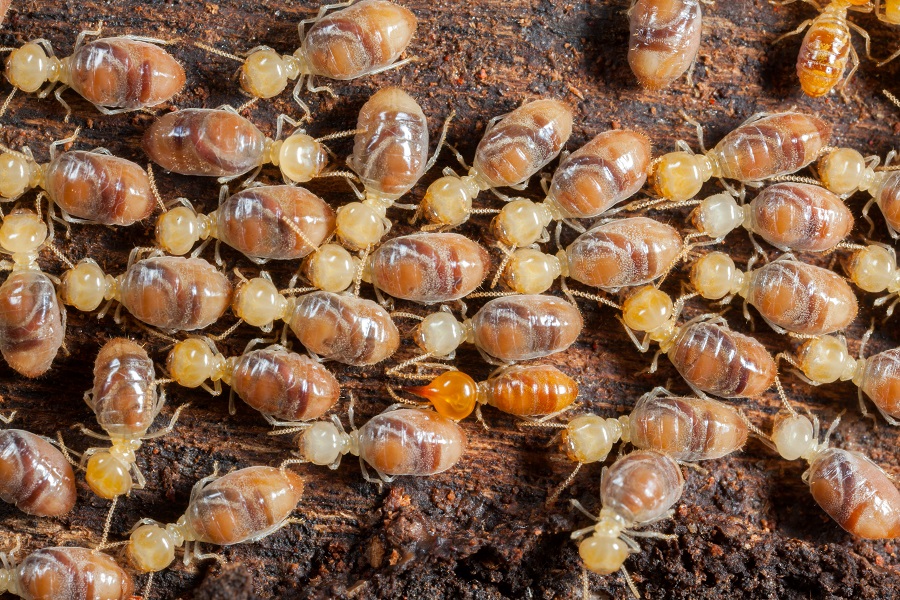Know Your Termite Species - Termites That Infest Homes
 There are about 2,750 species of termites worldwide but only a few are known to damage properties. Termites are hard to spot and even harder to be recognized by species. Termite experts are trained for this job since different termites would require different termite control measures. This makes calling a termite company important after finding signs of a termite infestation. But if you are curious, here are some easy ways to recognize the different termite species.
There are about 2,750 species of termites worldwide but only a few are known to damage properties. Termites are hard to spot and even harder to be recognized by species. Termite experts are trained for this job since different termites would require different termite control measures. This makes calling a termite company important after finding signs of a termite infestation. But if you are curious, here are some easy ways to recognize the different termite species.
Common Types of Termite Species
There are 4 types of termites that are known to cause property damage in the U.S. Usually, when there is a termite infestation in your U.S. property, it is one among these termites. Some features make them different from one another and we will discuss those.
Subterranean Termites
Subterranean termites are the most destructive termite species and are considered to be responsible for 95% of termite damage in the U.S. They are mostly found in the warm Southern states but are present in almost all U.S. states except Alaska.
Subterranean termites mostly live in underground colonies or moist places above the ground. A single colony can house up to 2 million termites.
Identification
Subterranean termites are creamy-white to dark brown or black in color and can grow up to 1/8 of an inch in size. Their body is long and narrow with a rectangular shaped head.
Subterranean termites are most active during the spring season. As for their eating habits, they are fast but picky eaters. If you notice neat and lined patterns of destruction on the wood, then it is a possible sign of a subterranean termite infestation since they tend to eat only the softest parts of the wood that are present between the grains.
Another easy way to recognize subterranean termites is the presence of mud tubes. These species of termites usually live underground and need moisture to survive. Hence, they build mud tubes to reach sources of food without being recognized or disrupted by predators. If you are noticing tunnel-like mud tubes near wooden things, then it is likely that you have subterranean termites in your home.
Drywood Termites
Drywood termites are prevalent in the coastal states South-West and South of the U.S. These termites live inside dry wood and hence are hard to spot. They don’t need shelter tubes like subterranean termites. They are most likely to infest second-hand furniture and untreated wood.
Identification
These termites are creamy-white to light brown in color. They are larger than subterranean termites and can grow up to 3/8 of an inch to an inch. They have smaller colonies with 2000-2500 termites. They usually infest wooden support beams, furniture and even floors.
Termite droppings are the only way to identify Drywood termites. Since they do not need moisture, these termites rarely show outward signs like mud tubes which makes them hard to find. Termite droppings also known as frass can be found outside the areas that they infest. They live inside the wood but tend to push out the frass. This can look like fine grains of sand or coffee.
Dampwood Termites
As their name suggests, this termite species needs a high level of moisture to survive and hence is usually found in damp areas. If you live in the Pacific coastal states or Southern Florida, your property is more likely to be infested by these termites. They live inside the wood they infest but build mud tubes to stay moist. These termites are identified by their fecal pellets.
Identification
Dampwood termites are cream or brown in color. They are about ½ to 5/8 of an inch in size with a long and narrow body.
They enter the property where wood is in contact with damp soil. They are most likely to infest damp areas and rotting wood and hence it is important to maintain the property regularly. Fix leaks, trim shrubs, discard rotten wood and clean roof gutters often to avoid infestation.
Also Read: How to Deal with the Swarms of Formosan Subterranean Termites
Formosan Termites
Formosan termites are a subset of subterranean termites and are commonly found in South Florida and Southern parts of the U.S. Gulf Coast. They are voracious eaters and can eat up to 31 grams of wood per day. They live in underground colonies but create secondary nests above the ground.
Identification
Formosan termites are cream to brown in color and grow up to half an inch. They have a long and narrow body with the head rounded on the sides and tapered in the front. They are often mistaken for subterranean termites but are harder to control. Swarming is the first indication of the infestation. A muddy nest packed with wood known as carton nest is the next indication.
Hi Tech Termite Control
Identification of termites can get quite confusing but not for us. We at Hi Tech Termite Control are termite experts and we can help identify and eliminate the termite infestation on your property. Contact us at https://www.hitechtermite.com/
- May 25, 2022
